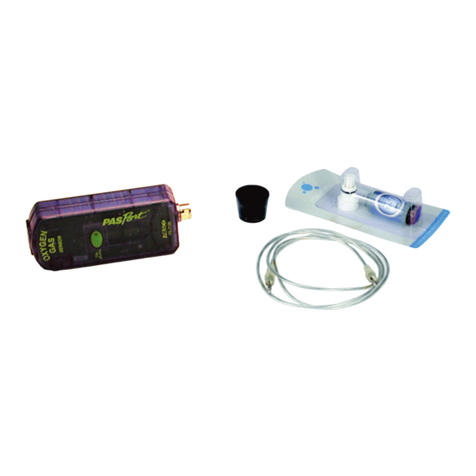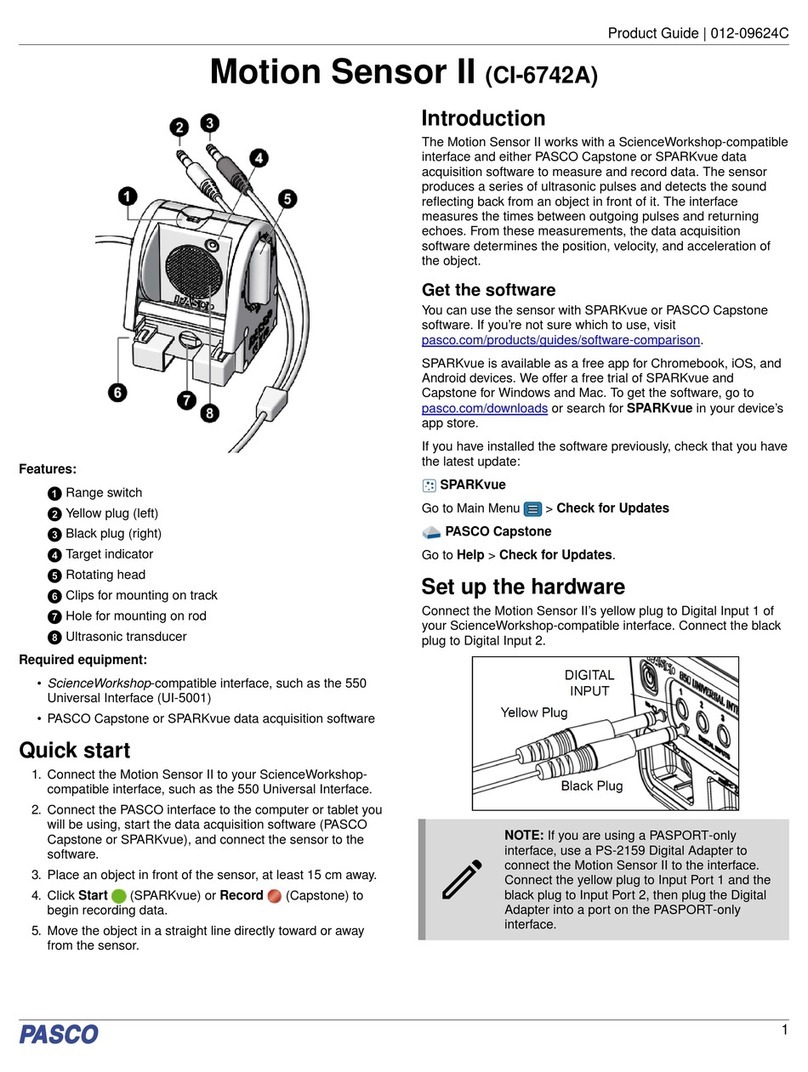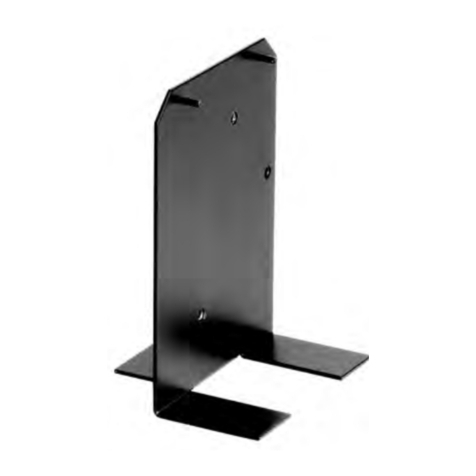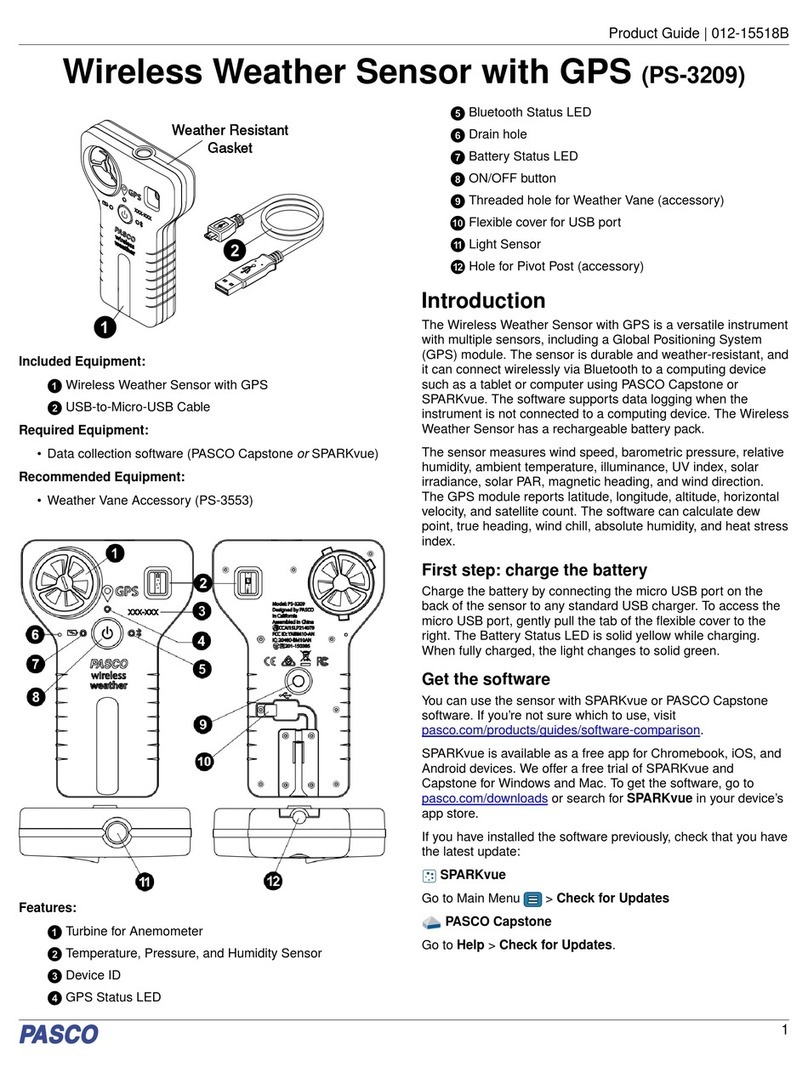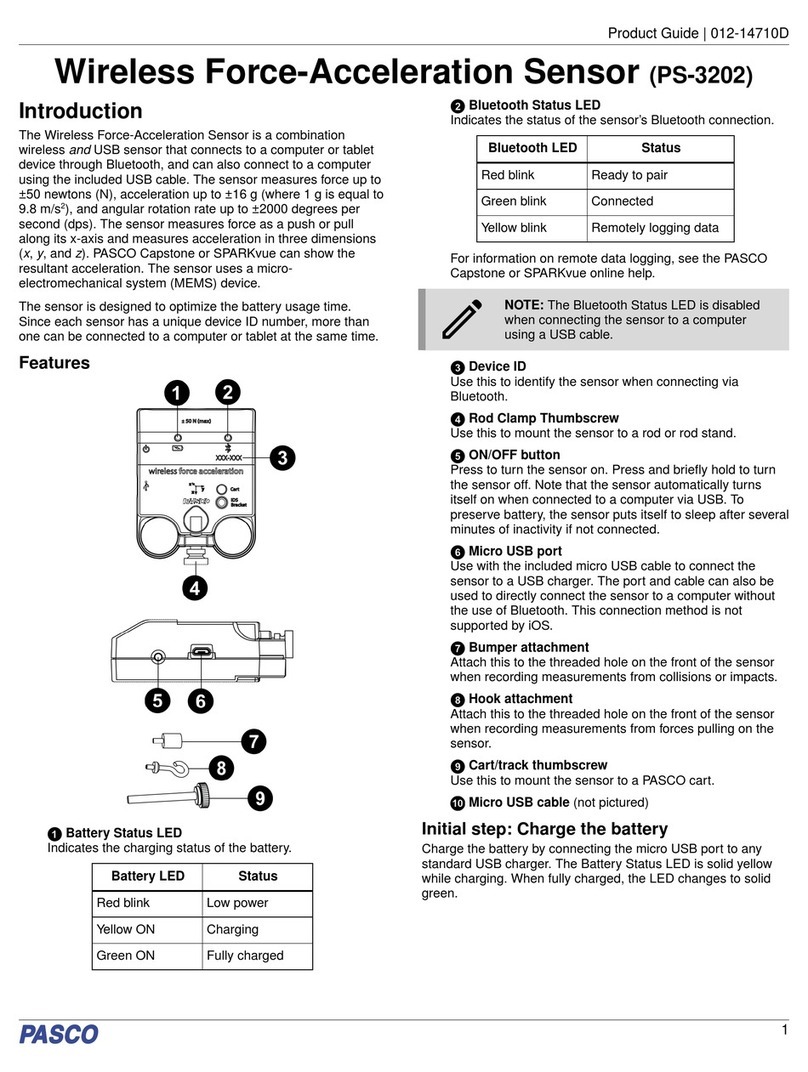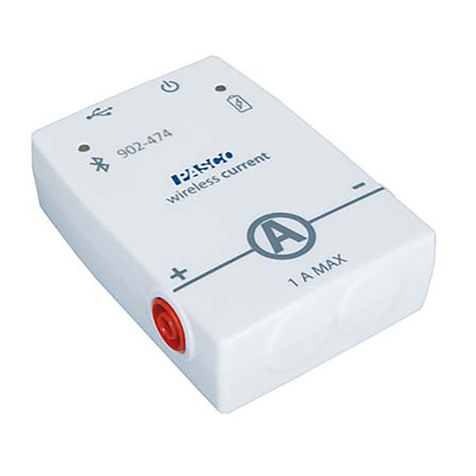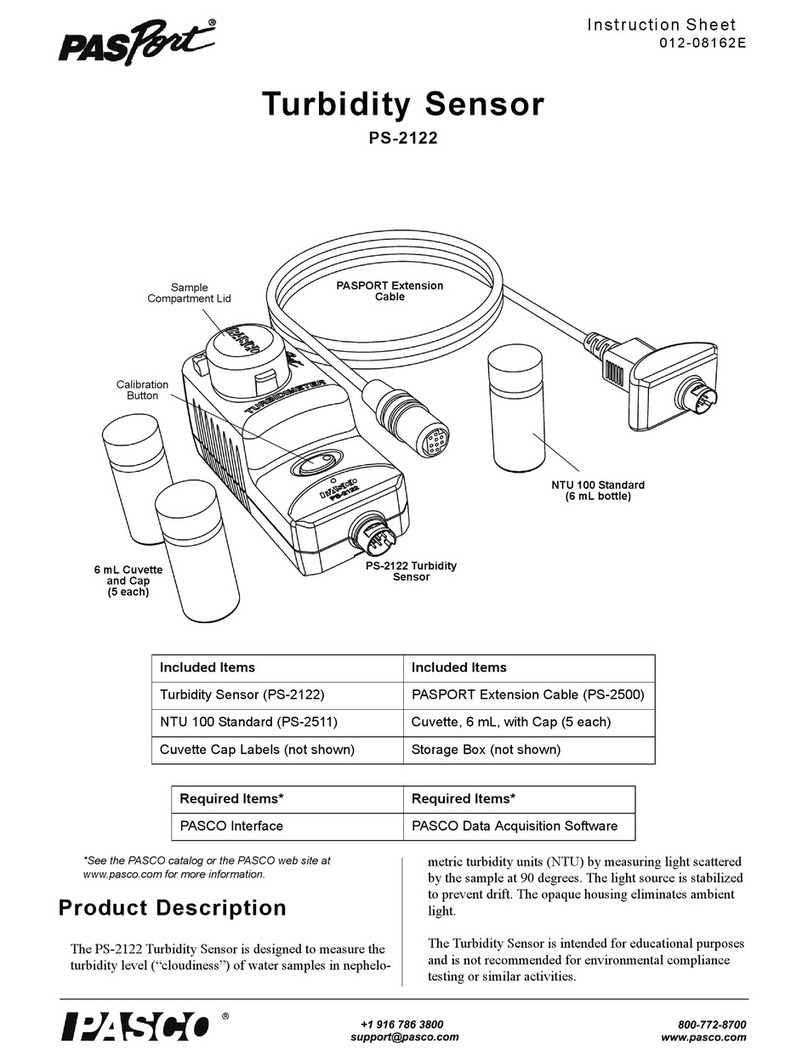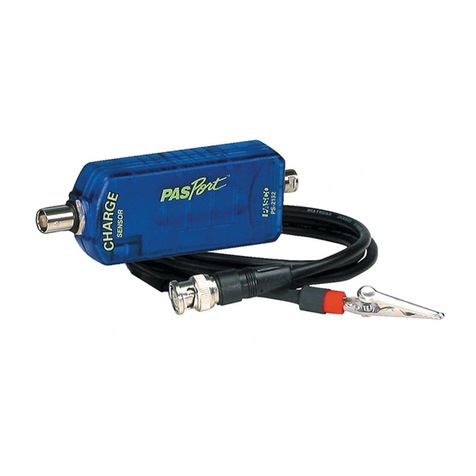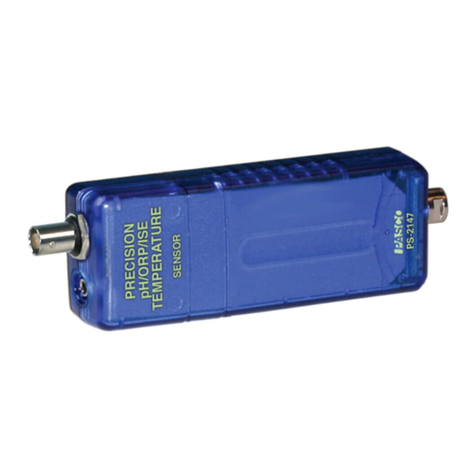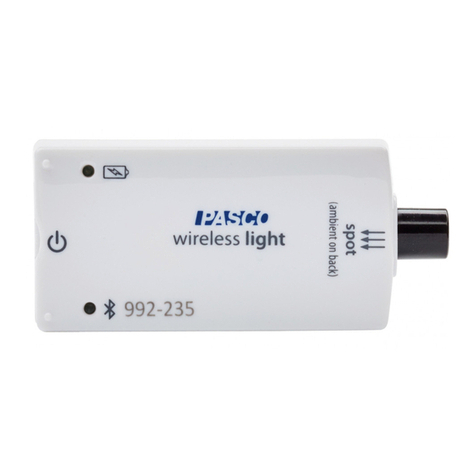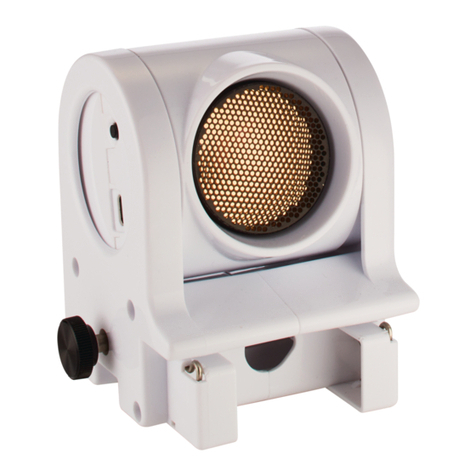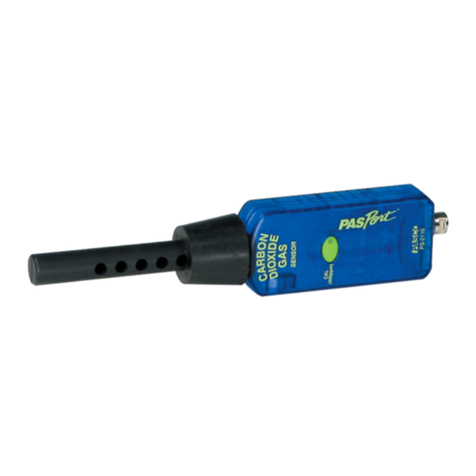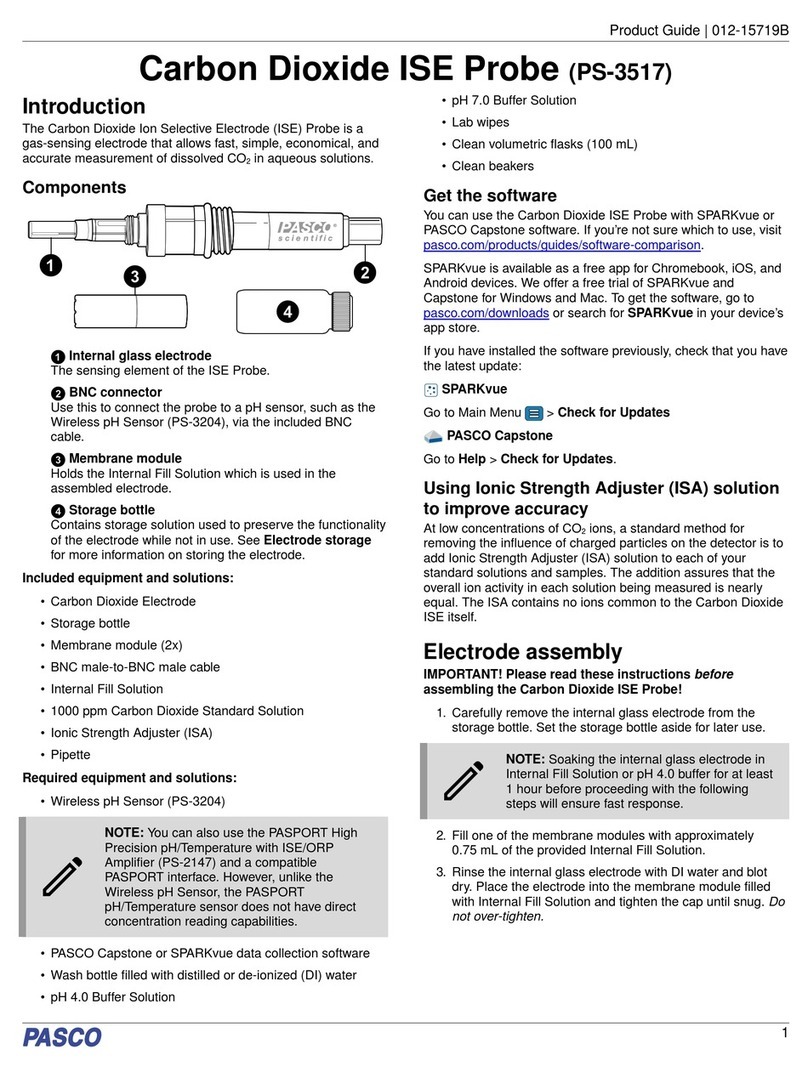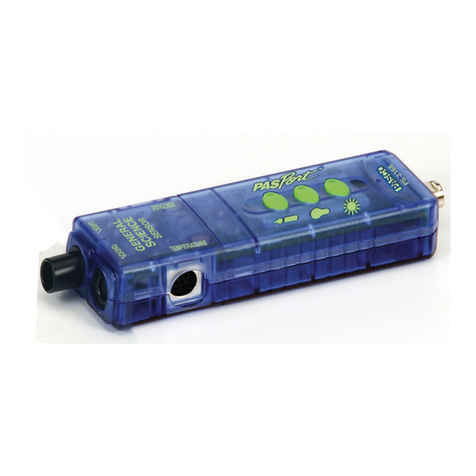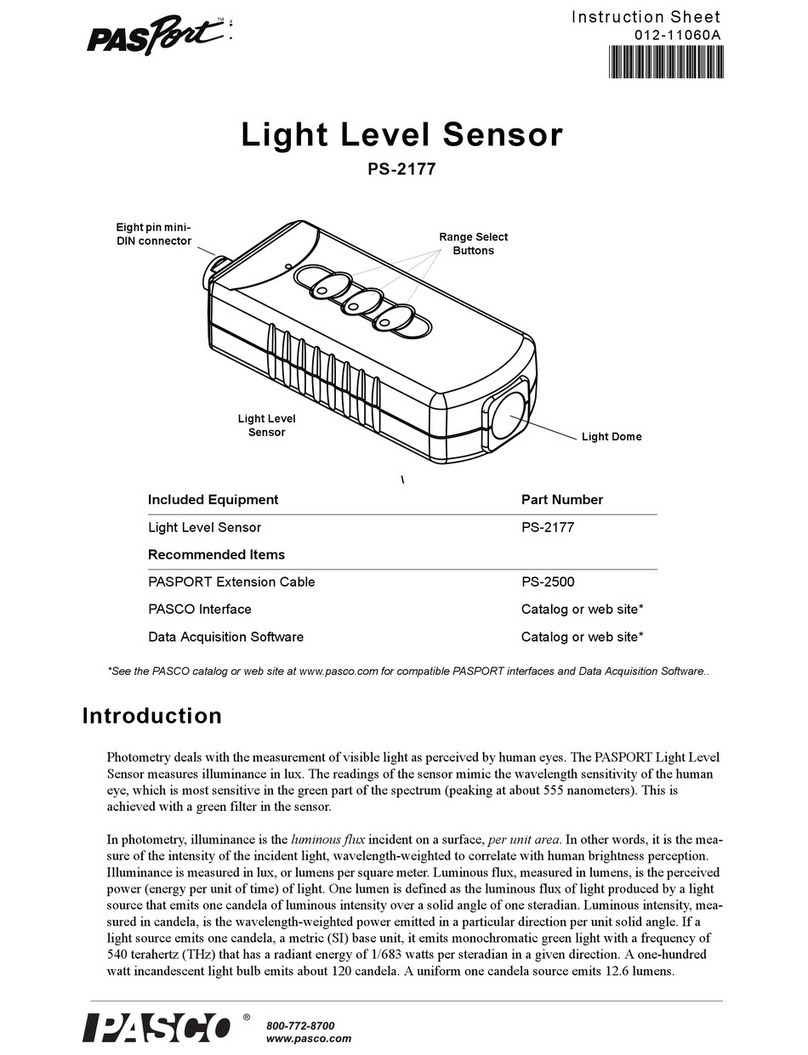
Carbon Dioxide Sensor 012-08402A
2
®
Equipment Setup Calibration Procedure for the Carbon
Dioxide Sensor
Calibration of the CI-6561 Carbon Dioxide Sensor is
not required, as the sensor contains a factory
calibration. If you wish better accuracy, you may
calibrate the sensor in typical atmospheric conditions
(around 400 ppm).
Note: Unlike most ScienceWorkshop sensors, the
Carbon Dioxide Sensor has a sensor-based calibration
routine.
Perform a single point calibration:
1. Go outside and collect a sample of fresh air
(approximately 400 ppm CO2).
2. Insert the sensor assembly and probe into the
upright sampling bottle. Be sure the stopper fits
snugly into the neck of the bottle (See Figure 2).
3. Bring the sensor/bottle assembly inside and connect
it to a ScienceWorkshop interface. Ensure the
interface is turned on and connected to a computer.
4. On the top of the Carbon Dioxide Sensor, move the
range switch button to the 10K range position.
(Note: This is the default position.)
5. In the DataStudio Setup window, double click on
the CO2 Sensor icon (to open the Sensor Properties
dialog); then click on the Measurement tab, and
select the 10K concentration range. Click OK.
6. In DataStudio, open a display and click the Start
button to observe the carbon dioxide reading. Wait
at least 90 seconds for the reading to stabilize.
7. Press the Calibrate button on the sensor and hold
for 3 seconds. The green light will stay on to
indicate calibration has begun.
1. Use the supplied bottle to collect a sample of
carbon dioxide gas. Insert the sensor probe with
stopper into the bottle.
2. Connect the Carbon Dioxide Sensor to an analog
channel (A, B, or C) on a ScienceWorkshop
interface.
3. Open DataStudio. In the Welcome to DataStudio
window, double click “Create Experiment.”
4. In the Sensors list of the Experiment Setup
window, click and drag the
Carbon Dioxide Sensor icon
to the same analog channel
(A, B, or C) on the picture
of the interface.
5. Use the switch on the top of
the sensor to select a
measurementrange:
10K: 0 to 10,000 ppm or
100K: 0 to 100,000 ppm.
6. In the Setup window, double click on the CO2
Sensor icon, click on the Measurement tab, and
select the concentration range (10K or 100K). The
range is 10K by default. Click OK.
7. (Optional): To calibrate the sensor, follow the
calibration instructions on this page.
Note: To change the sampling rate (rate of data
collection), use the Plus and Minus buttons in the
General tab of the Sensor Properties dialog. The
sampling rate depends on the interface used. The
default rate is 1 sample/second. One sampling cycle
occurs every time the green light flashes. Although
the sample rate of the interface can be set much
higher, the sensor only updates once per second.
8. To collect data, open a display and click the Start
button on the main toolbar.
8. Wait approximately one minute. When the green
light flashes again, calibration is finished.
Figure 1: Range
Switch


